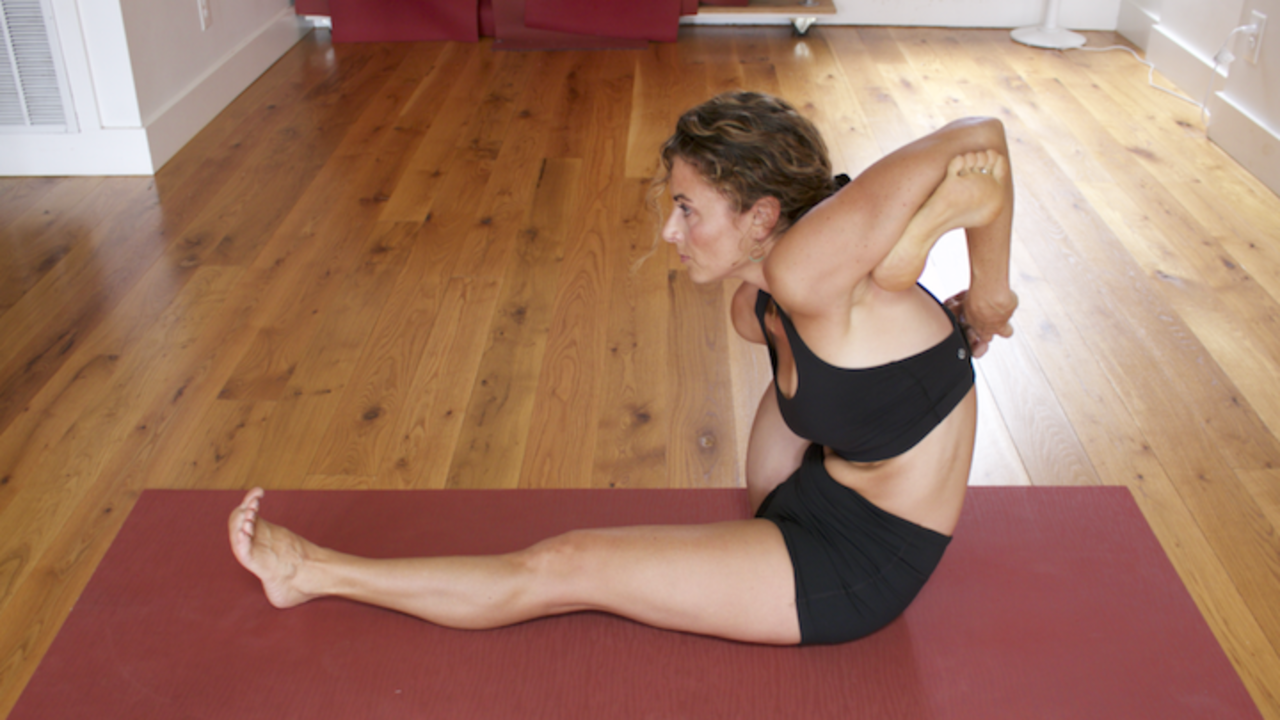
The Practice of Vulnerability
Jul 25, 2017The two hours I spend on my yoga mat every day have taught me more about myself than most of my other lessons and experiences combined. I regularly run head first into my limits. The practice is actually set up that way – you don’t get to stop until you can’t do a posture – until, in a sense anyhow, you fail. And in a Mysore room, that means “failing” in front of others. While I know there are many advantages to practicing in a group, it also means that nothing happens behind closed doors. It’s all right there.
The practice of yoga fosters connection. It leads us to connect with the community and with the teacher. The connections that we build with our co-practitioners in a Mysore room or consistent practice setting lead us to trust our community and feel safe and supported. The trust that we build in our relationships with our teachers and even with fellow students makes vulnerability truly possible. And, of course, the ultimate connection that we make through consistent and devoted practice is with ourselves.
The connections that we build also lead us to self-acceptance. When we allow ourselves to be vulnerable, feel accepted by those around us, and accept ourselves, defensiveness and all the other things we do to protect our fragile egos become less necessary.
When we are really practicing yoga, when we are connected to our breath and our body and our souls we have to show up fully. You have to get down and dirty with your nose to the grindstone. And surely, if you are at this long enough, the practice will kick your ass on occasion.
Sure there is a possibility of physical risk. Pulled muscles, blown out knees, dislocated joints – but it’s important to point out that these are usually much scarier in our minds than they are in reality. For me the real scary stuff has always been the extreme poses when I feel exposed, when my heart is busting open, when I feel raw, when I’m caught falling back into my old patterns, when I’m getting adjusted and I have to trust and surrender. The practice demands discomfort from us. By definition it puts us in a physically and psychologically vulnerable state.
We are asked to play on the edge. We get on our mats and practice with our whole hearts even though there are no guarantees. We invest in something and we have no idea what the outcome will be.
Once we get through these challenges on our mats – these moments of feeling uncomfortable, vulnerable, challenged, scared – we face our day with clearer eyes. The lessons from our mats teach us how to be vulnerable in the world. How to ask for help. Experience heartbreak, disappointment, failure, embarrassment. We learn how to fall, get back up and do it again. We learn how to live whole-heartedly and without the fear that we aren’t enough.
Getting familiar with vulnerability on my mat has taught me that being vulnerable isn’t a weakness. In fact, it’s much closer to the opposite. Being vulnerable has allowed me to live my life more fully in the world. It’s made connection possible. It’s allowed me to put myself out there even when I can’t control the outcome.
Ashtanga has given me a willingness to fall because I have learned how to rise. In my practice, and even as a teacher, I have had to recover countless times. If it weren’t for all these recoveries I don’t know that I would be brave enough to dare in the first place.
People on a spiritual path often talk about pilgrimages. But the real pilgrimage is the one we take into our own heart. Vulnerability isn’t an option here. It’s a requirement.
Stay connected with news and updates!
Join our mailing list to receive the latest news and updates from our team.
Don't worry, your information will not be shared.
We hate SPAM. We will never sell your information, for any reason.



